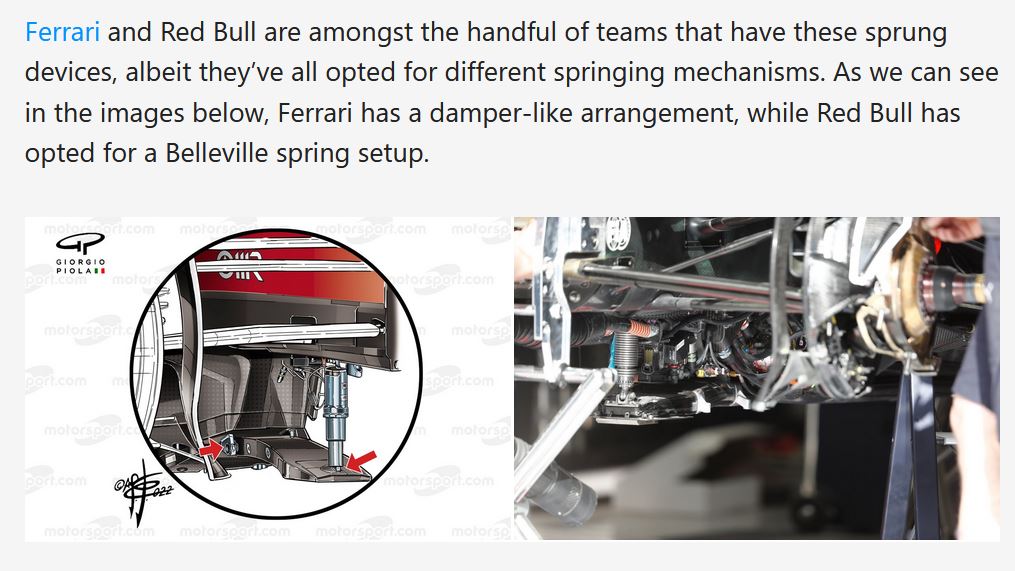Not sure how much to snip on this one so I’ve left the quote intact. The porpoising that happens with a planing boat is actually quite different in some important ways. With a boat one of the most important factors is the angle of thrust; not just relative to the center of mass but also the angle of attack of your planing surface. It’s kind of a weird three variable problem because you’ll have an optimal angle of attack depending on total mass, relative to the power you have available.
With the car situation your angle of thrust relative to your critical surface is nominally fixed, only changing a tiny bit with compression of suspension. The length of an f1 car and the fact that it’s supported at both ends means that there’s a lot less variation.
It’s apparent that the front wings of this season’s cars aren’t having the same problem, and so we can effectively rule out most arguments about cg, since they affect primarily pitching type porpoising.
The continuity and strength of floor sealing vortices may be affected by slight variations in pitch though. The front wing may retain the design downforce and drag but its wake may develop a periodicity depending on its interactions at various heights for instance.
Dee wrote: ↑19 Mar 2022, 01:11
Okay, I put in centre of mass and porpoising into google and came across this interesting post in a boat design forum
https://www.boatdesign.net/threads/porpoising.1155/
Not cars obviously but seemingly the same thing happening
"I have a problem with porpoising on my 12' home-built duckboat whenever I get above 3/4 throttle. I am particularly interested in the center of gravity/center of lift relationship.
Doesn't moving weight forward only lessen the frequency of the occillation in accordance with consevation of angular moment. From what I've gleaned so far, and correct me if I'm wrong, here are the dynamics of porpoising: The boat has a fixed center of mass (COM). The hull has a center of boyancy (COB) that moves aft as the wet surface of the hull decreases at higher speeds. As the COB passes aft of the COM, gravity pulls the bow down rotating on the COB point. When the bow goes down, the COB immediately and rapidly moves forward of the COM. Stability is reestablished until the COB once again moves aft of the COM.
Moving weight forward, if my thinking is correct, should only increase the likelyhood of porpoising. Though initially this might bring the bow down, and hence, move the COB forward until speed is ultimately increased enough to shift it aft of the COM again, the forward shift of the COM only appears to deminish porpoising because as the radius of arc of the ocillating COM about the COB increases, the frequency of occillation decreases to preserve the angular moment.
Trim in causes the craft to run in a more bow down attitude which serves to keep the COB forward. Porpoising is prevented until enough power is applied to move the COB aft again.
This leave me with the counterintuitive solution of moving weight aft so as to move the COM aft.
There is the possibility of my boat being overpowered (by definition of this particular instability) which moves the COB aft to the extreme, and more so than any aft movement of the COM that I would be able to achieve.
In line with my thinking, the reason that a rocker hull is thought to porpoise more is because the bow rides high, and therefore, has further to fall making porpoising more pronounced as opposed to making it more likely.
I guess the trick then is to balance weight distribution, trim attitude, and power for the most efficient use of thrust."
Obviously a boat not a car but generally the same issue and a very interesting insights






